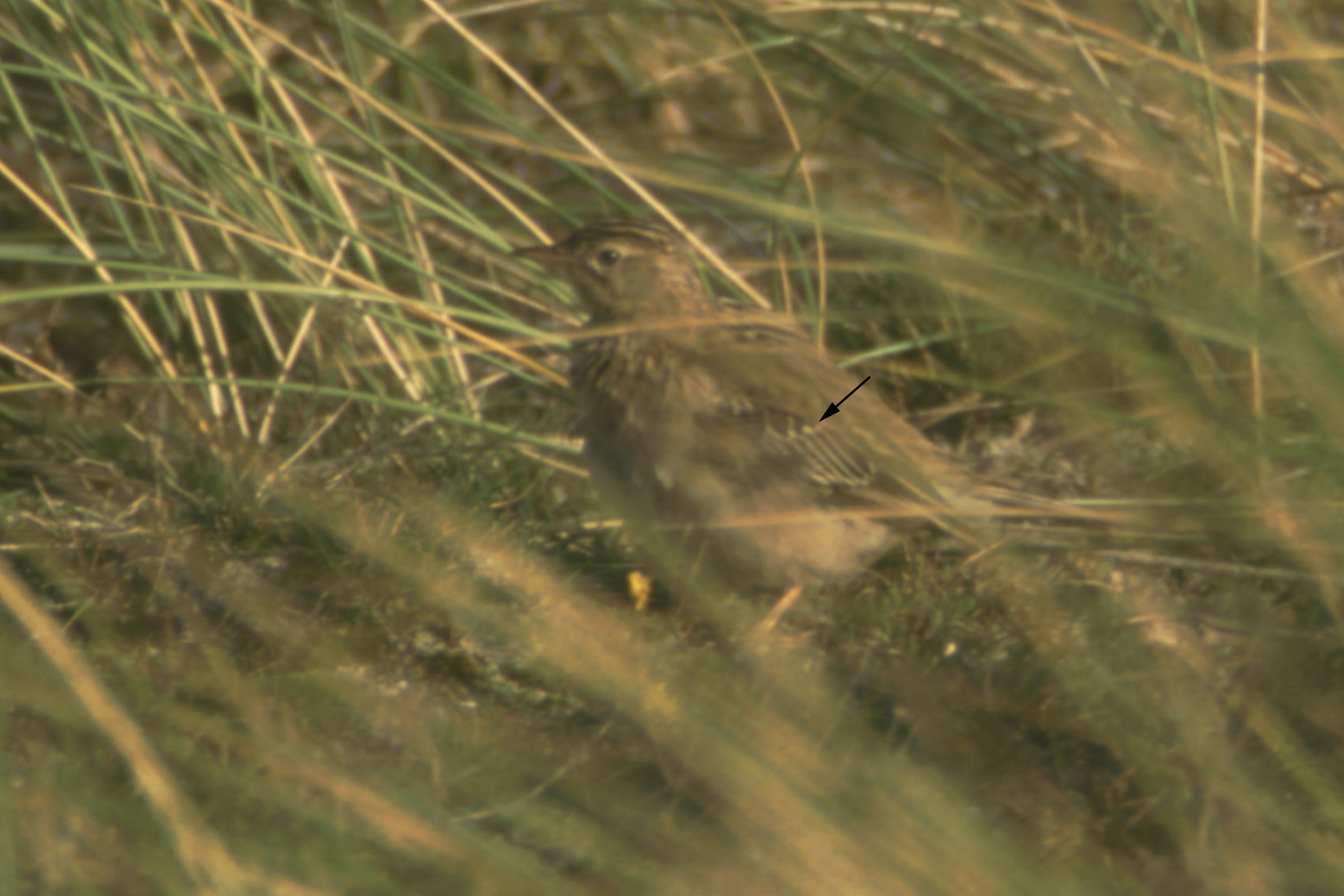Blyth's Pipit - Anthus godlewski
The Isabelline Wheatear attracted a lot of birders and this presence of birders will have an effect on the discovery of other rare birds. In America this is called the 'Patagonian Bird Table Effect', in the Netherlands will it be called the 'Maasvlakte Effect' in the future? Friday afternoon October 25th 1996 after observing the Isabelline Wheatear, Mark Plomp and Peter Meijer and the discoverers of the Isabelline Wheatear, Wouter Dijksman and Jan Maas discovered a large pipit near the Lighthouse on the Maasvlakte. They called Max Berlijn, who was still at the Isabelline Wheatear. When they flushed the bird, it didn't call like a Richard's Pipit, but instead it made a soft 'chep, chep'. The overall pattern fitted Blyth's Pipit Anthus godlewski best and after checking other features (tail pattern, size, head pattern, jizz etc.), they all were sure it was in fact a Blyth's Pipit, the second record for the Netherlands! The bird was seen till at least Monday 28th and especially on Saturday 26th it was well observed by a crowd of 150 birders. The bird was video-taped, photographed and sound-recorded.

26 October 1996, Maasvlakte, Rotterdam ZH; © Arnoud van den Berg.

26 October 1996, Maasvlakte, Rotterdam ZH; note the diagnostic median covert! © Harm Niesen.
This was the second record for the Netherlands, the first was a bird trapped at Westenschouwen on November 13th 1983, which died the same night and is now as a skin in the Zoological Museum of Amsterdam (cf Dutch Birding 15: 198-206, 1993 and Dutch Birding 18: 282 and 284, 1996).
Now you can go to the main-index, to the 1996-index or the next species and my 400th species, the Daurian Shrike.

